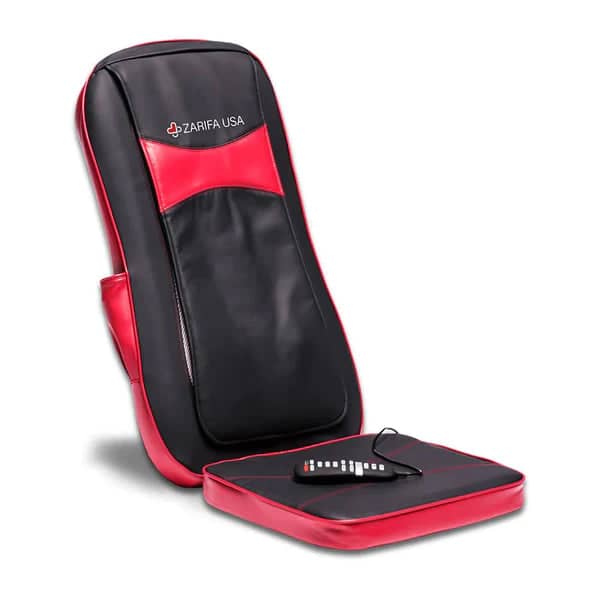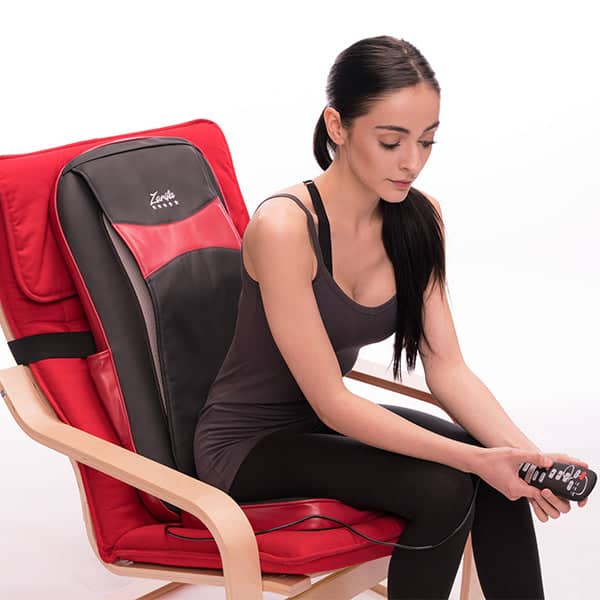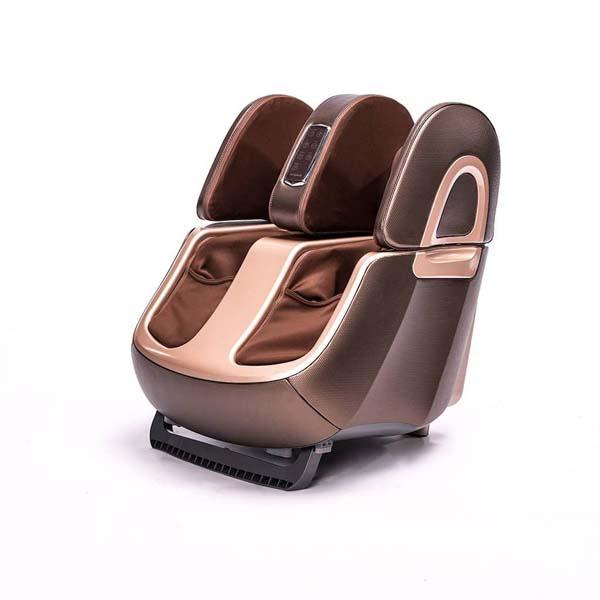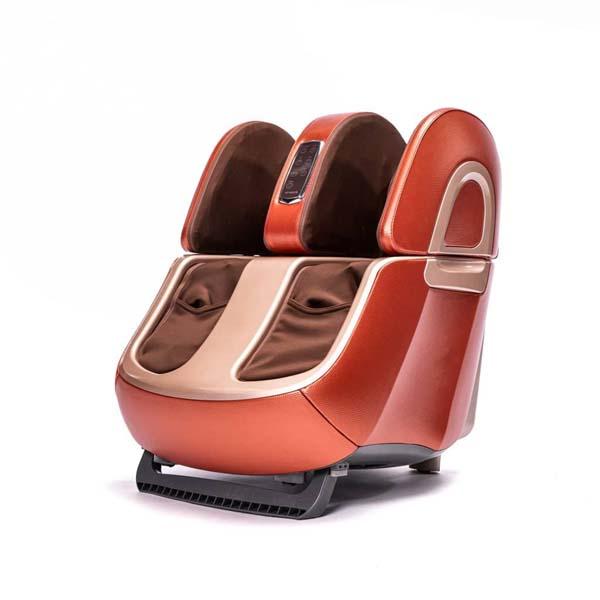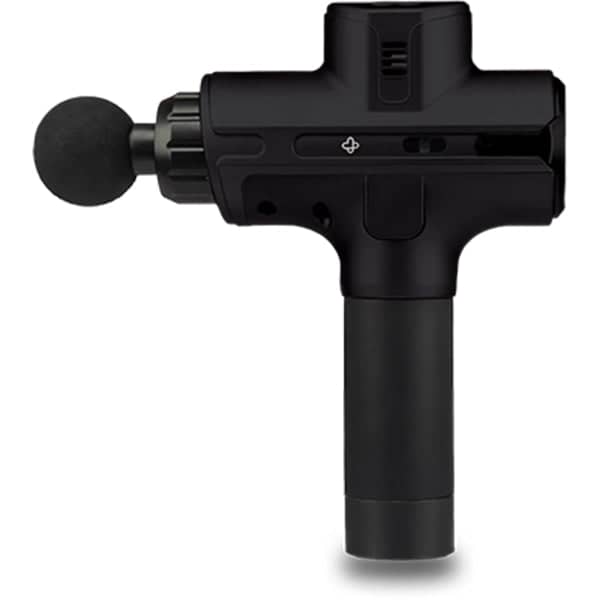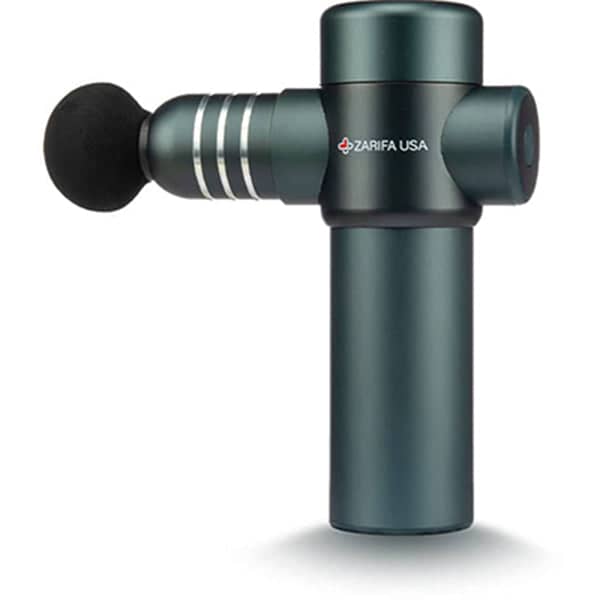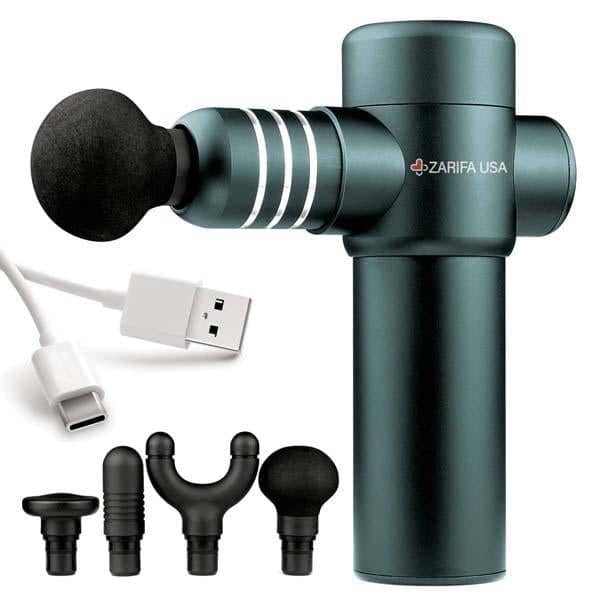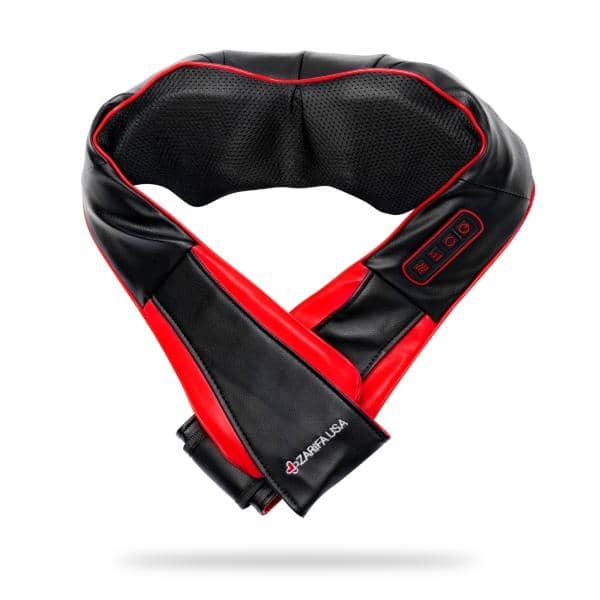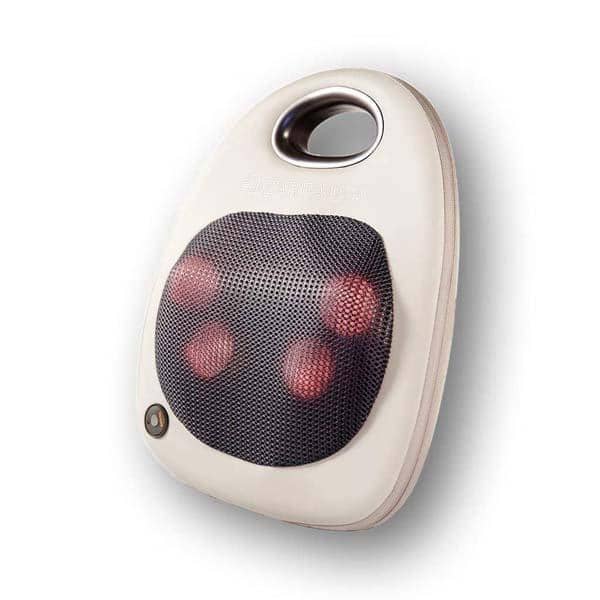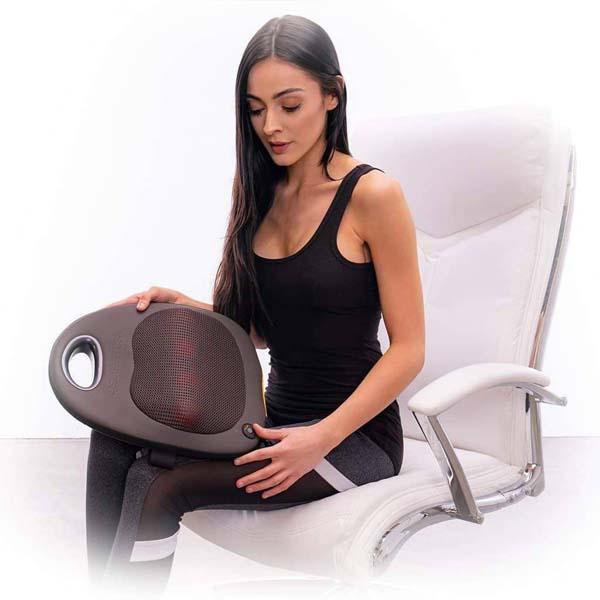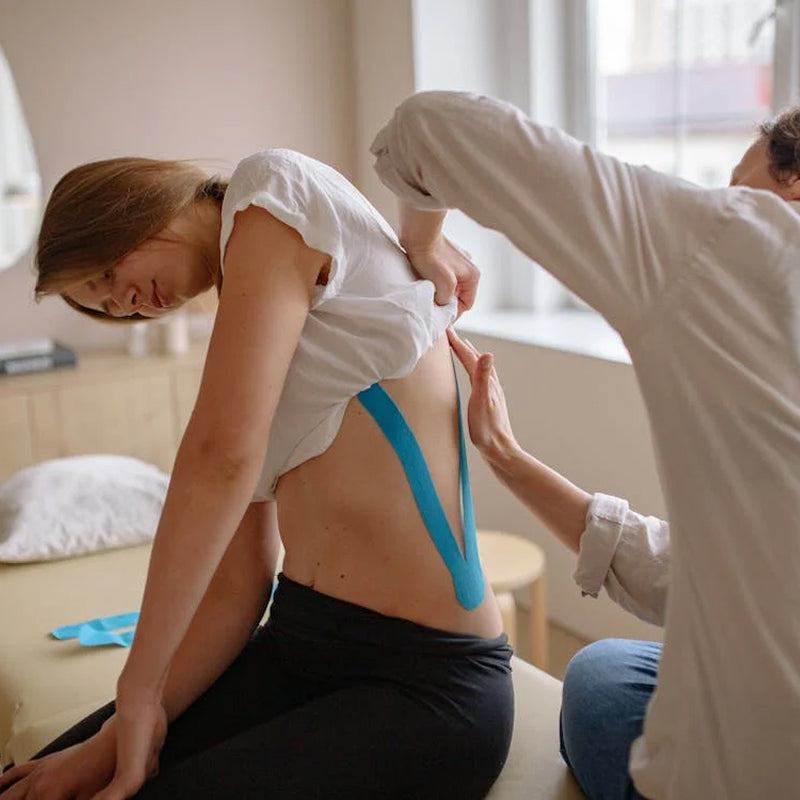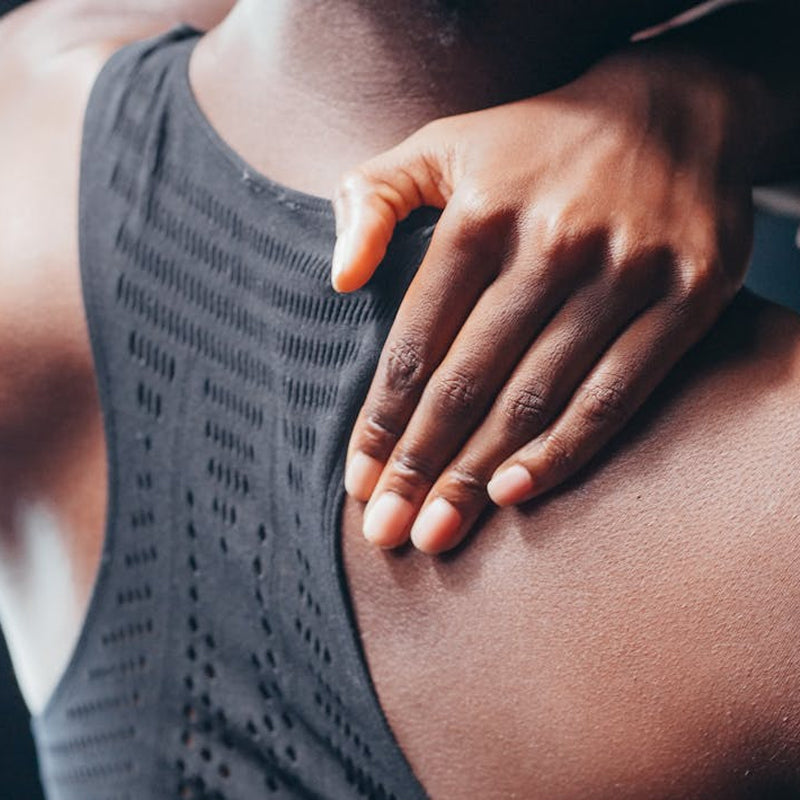After a long day sitting at the desk or running around the kitchen, nothing beats a relaxing massage.
What are your options here?
Massage therapy? Oh, no, there is no time to book a spa.
Massage Gun? Perfect, you have it available at your convenience.
The choice is clear. Choosing the best massage guns is crucial for getting relaxing massages at home. Have you ever wondered about the right way to use a massage gun? What about how the massage gun works or what its benefits are?

Massage guns are often referred to as percussion massagers. Percussive treatment and vibration therapy provide many of the same benefits as massage therapy without the cost or hassle of traveling to a massage therapist.
These electric massagers, which cost approximately $300 and look like power drills, provide a powerful massage and often have several settings and attachments like hardening balls and finger-like points.
So, how does the magic of the massage gun works? Keep reading to find out.
How does a massage gun work?
The guns provide massage gun therapy, giving percussive therapy or vibration therapy by frequently applying bursts of pressure to muscles in a quick up-down action, similar to a small jackhammer.
Percussive therapy and vibration therapy
Percussive therapy improves blood circulation. It is a technique that applies force to specific body parts and encourages an increase in blood flow. There are various reasons for diminished blood flow, one of them being inflammation. Many doctors recommend percussive therapy to help improve the problem.
Muscle tension reduces, range of motion increases, and muscle recovery accelerates because of percussive therapy. Unlike vibration therapy and foam rolling, percussion therapy massage guns may penetrate up to an inch into your soft tissue, engaging your muscles and supporting your brain in releasing stress.
Most people, even some experts, consider percussive therapy to be more effective than vibration therapy. This is because the vibration was previously associated with immediate pain or soreness relief for a specific part of the body. Due to its lack of ability to deeply heal the tissues, most people were used to relying on more aggressive therapy sessions alongside vibration therapy. Compared to traditional physical therapy, percussive and vibration therapies offer different benefits and can be used in conjunction with physical therapy for comprehensive muscle recovery and scar tissue management.
Now that technology is advancing, we have better tools, such as massage guns, to offer percussive and vibration therapy altogether. Intense muscle stimulation is now a basic part of these massage guns. Massage guns can offer you both vibration therapy and deep tissue massage.
Now, the question is how do you make full use of a massage gun? First, you must understand all of its attachments.
How to use massage gun head attachments
Every percussion massager comes with a choice of massage gun heads and accessories that can be swapped out. These massage gun heads are designed to target specific muscle areas and should be used correctly to avoid injury. Most massage guns come with one or more of these five attachments, regardless of the brand:
-
Bullet
-
Fork
-
Ball
-
Flat round
-
Soft padded (air cushion)

1. The bullet attachment
If you want to utilize your massage gun to target certain trigger points or knots, this is a great option. This massage gun attachment is great for targeting a specific body part, such as the shoulders or other ligament attachment spots, providing relief from muscle pain.
It enables you to penetrate deeply into the tissues. It’s fantastic for trigger point massage, but don’t use it for more than 15 seconds on each muscle group. It’s unlikely to be the one you use the most, but it’s great for specific purposes.
2. The fork attachment
The dual-pronged head lets you effectively focus on areas such as the spinal muscles, which may be beneficial for people suffering from lower back discomfort.
You can use the massage gun to softly massage the back of the neck if you’re careful. To do so, start slowly and with the gentlest setting possible to determine your tolerance.
It can also be applied to other body parts, such as the calf muscles and Achilles tendon. Because two heads are better than one, you’ll get twice as much pinpointed force and coverage with the fork.
However, some experts may recommend that you should not use it on your spine because it is a very sensitive area, and the fork attachment could cause pain. Consult your doctor before using a massage gun if you have any concerns or existing conditions. Additionally, consult a physical therapist before using the fork attachment on sensitive areas to ensure safe and effective use.
3. The ball attachment
This is the most frequently used massage gun attachment. It's made of either dense rubber or rigid foam, depending on the manufacturer. It's the most versatile attachment because it can treat both large and medium group muscles, including the glutes, hamstrings, and quads.
This attachment is excellent for speeding up healing and minimizing muscle discomfort following workouts. It provides a more gentle treatment on bony areas and sensitive muscle groups because it is constructed from a soft material.
4. Flat round attachment
This is a fantastic massage gun attachment that can be used for a variety of purposes. The flat head is perfect for minor muscle areas and full-body massage, from the pecs to the glutes to the legs.
It won't hurt as much if you accidentally run over bones when massaging because it doesn't have any sharp edges.
This massage gun attachment is excellent for shoulder blades and IT bands. It is specifically designed for smaller surface areas and muscle groups with more dense fibers. However, it is also amazing for full-body massage and relaxation.
5. The padded round attachment
Air buffers the impact of this cushioned, spherical attachment. It's very nice to use around bony areas like the spine, shoulder, wrists, feet, and upper neck.
The padding offers a little "give," so if you hit your wrist bone, you won't feel the pain you would with a hard attachment. Instead of the fork attachment, this is a great head to use for your lumbar and thoracic spinal muscles. It's the gentlest attachment to utilize when you're working with delicate or bony areas.
That isn't to suggest that this attachment doesn't provide a good massage. The cushioned round isn't completely soft and still offers effective percussion therapy to your aching muscles.
How long should you use a massage gun for muscle recovery?
When you use a massage gun, you may feel a little discomfort. If you have ever gotten a massage from a therapist, you would know how it feels when they work out a knot. While massaging stiff, tight muscles with a massage gun can be uncomfortable, it feels good to loosen things up. Considering the battery life of the massage gun is important for extended use and multiple sessions before recharging.
With each impact, a massage gun sends micro-traumas to your muscles, similar to how exercise causes micro-tears in the muscles. As such, massage guns can enhance blood flow and reduce tightness. If you’re not careful, they can have the reverse effect.
Don’t use a massage gun for more than 15 minutes in one area. It’s best to use it for 2 to 3 minutes per muscle group then move on. Don’t leave the massage gun on one spot for more than 10 seconds. Ask your trainer or doctor what the best massage gun methods are for your current conditions.
Where NOT to use a massage gun
To begin, when massaging muscular sprains, strains, inflammation-related injuries, or shattered bones with any massage gun, proceed with caution. In fact, it’s best not to touch these affected areas at all with a massage gun. Before using a massage gun or comparable equipment, see your doctor if you have any injuries or persistent health concerns. Additionally, comparing the safety features of different models of other massage guns can help you choose the safest option for your needs.
Experts advise that if you are pregnant, you should consult a doctor before using a massage gun. Other than that, using it on the head or genitalia is also not a good or safe idea.

FAQs
1. How do you use a massage gun on quads?
Since the quads are regularly-utilized muscles, they can become tense and tight. Use a fork or a bullet head attachment for deep knots. Allow the massage gun to rest on one area for only a few seconds at a time.
Things to remember while using a massage gun on quads:
-
Apply the massage gun across each side of the quad and stretch before working out. This will promote quad flexibility and prevent spasms during activity.
-
Avoid applying too much pressure to the massage gun. Let it do its thing.
-
Throughout the massage, take deep inhales and exhales.
-
Make sure to only use the gun on your quad and not your knee cap or femur bone.
2. How do you use a massage gun on your legs?
Choose the attachment head and power settings that are most comfortable for you. Experiment with the various possibilities.
We recommend simply moving the massage gun freely on your thigh to relieve leg discomfort and tired muscles. Experiment with different types of movement, both along and across muscle fibers, and see what feels best to you. The basic goal is to make contact with as many fibers as possible.
Do this for at least 2 minutes.
3. How do you use a massage gun on your feet?
A massage gun utilizes percussion therapy to alleviate pain and aid in the treatment of plantar fasciitis. With 4-5 attachment heads and 4-speed options, you can tailor it to your specific needs.
Sit down and cross one foot over the opposite knee. Then, apply the massage gun gently to the sole of the foot. Take care to set a good pace and allow the percussion tool to work its magic to relieve pain and soreness.
4. How do you use a massage gun on calves?
After a leg workout or a run, massaging your calves is a good idea. Move the massage gun along the calves, feeling for sensitive areas each time. Before continuing, stay on each spot for 10 seconds. Massage one leg for 1-2 minutes before switching to the other. For best results, try using the flathead attachment.
Begin seated, raise your leg, and comfortably rest it on a wall or chair. From ankle to knee, massage the outside of your calf. Use a massage gun on your calves for regeneration (levels 1-2) or activation (levels 3-4).
5. How do you use a massage gun on the upper back?
Run the massage gun back and forth along the muscle fibers in your upper back. Perform this exercise on each section of your back for 10 seconds. Remember, a gun with better ergonomics will do a better job. If you're doing it yourself, use the round attachment head. If you have a helping hand, they can help you get the greatest results by using the flathead.
How do you use a massage gun on yourself for sore muscles?
Apply the massage gun to the desired areas and massage your sore muscles. There's no need to exert excessive force or pressure on the affected areas. After a few minutes of holding the massage gun in the same spot, begin moving it around at a slow and steady speed. It's best if you keep your speed under one inch per second. If you come across any knots or tight spots along the way, linger there for a few moments before going on.
For up to two minutes, concentrate on the larger muscle groups, such as the hamstrings. Focus on the smaller muscle groups, such as the wrists, for less time.
7. How do you use a massage gun on the piriformis?
Pick up the massage gun and slowly move it around the hip area. However, when exerting pressure on the glute areas, especially around the piriformis muscles, be cautious to avoid irritating the nerves.
Pushing directly on the piriformis muscle for more than three seconds is not recommended. Moving the massage gun directly on the piriformis will irritate the muscle. As a result, your sciatic nerve will bear the brunt of the pain. Relax and let your massage gun do the work on surrounding muscles.
Bottom line
A massage gun is a great device for relaxing various muscles. Relieve your sore muscles by choosing the best massage gun by Zarifa.
Now you know the best ways to treat your legs, feet, back, thighs, and more. One of the most important steps to achieving a safe and effective massage is choosing the right massage gun and attachments. Additionally, you must consult your doctor as you might have some injuries or conditions for which a massage gun is not suitable.
Otherwise, read the manual, keep this guide in mind, and turn to experts to get a better massage gun session. A portable massage gun is especially beneficial for on-the-go use, whether you're traveling or heading to the gym, providing muscle relief wherever you are.
All Zarifa USA products are HSA and FSA-eligible. This means you can contribute your health savings funds towards the purchase of any of our products!



